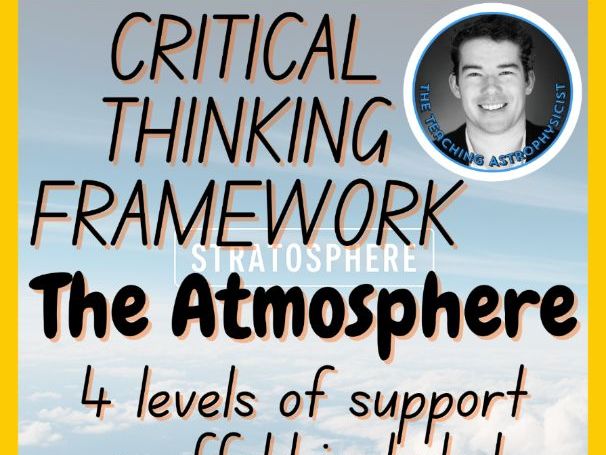

Integrating a critical thinking framework with 4 levels of supportive scaffold is highly beneficial when teaching students about the atmosphere because it systematically builds their understanding from basic concepts to complex applications. Beginning with foundational atmospheric knowledge, students are first introduced to key terms and processes, and then gradually encouraged to analyze and evaluate how factors like precipitation, evaporation, and atmospheric composition and layers interrelate. Each successive scaffold level supports deeper inquiry, ensuring that learners are not only memorizing facts but also developing the ability to apply, reflect upon, and extend their understanding of the atmosphere to real-world situations. This structured approach fosters higher-order thinking skills, enhances engagement through step-by-step challenges, and ultimately equips students with the analytical tools needed to explore and solve environmental issues. After all, we can not and should not leave all the thinking to the chatbots! With this in mind, let’s engage with this excellent learning and teaching resource.
Learning about the atmosphere through a critical thinking framework helps middle and high school students develop analytical reasoning skills while exploring real-world earth science concepts. By examining the interconnections between parts of the atmosphere, students practice identifying cause-and-effect relationships, drawing evidence-based conclusions, and formulating hypotheses about how specific interactions and feedback mechanisms occur. This process encourages them to question assumptions, interpret data methodically, and evaluate atmospheric scenarios in a structured way.
THIS ATMOSPHERE CRITICAL THINKING FRAMEWORK CAN BE USED SO MANY WAYS:
- Guided Inquiry Projects: Assign each step as a stage in a research project, from forming a question to reflecting on findings.
- Group Discussions: Facilitate structured group dialogues where each student is the primary driver to one step of the framework.
- Problem-Solving Stations: Set up stations, each focusing on a different step (e.g., analyzing reasoning, identifying limitations), and rotate groups through them.
- Reflection Journals: Encourage students to write short entries on each step after exploring new content or completing a project.
- Peer Teaching: Have students create mini-lessons using the steps, culminating in an elevator pitch or summary to teach classmates.
- Assessment Tool: Use the framework’s steps as a rubric to evaluate the depth and clarity of students’ scientific reasoning and presentations.
Something went wrong, please try again later.
This resource hasn't been reviewed yet
To ensure quality for our reviews, only customers who have purchased this resource can review it
to let us know if it violates our terms and conditions.
Our customer service team will review your report and will be in touch.